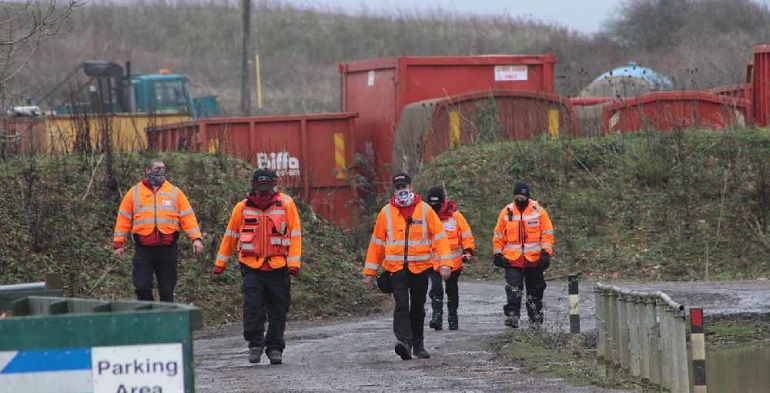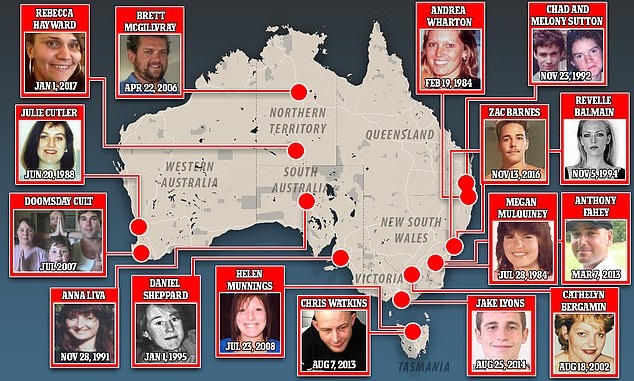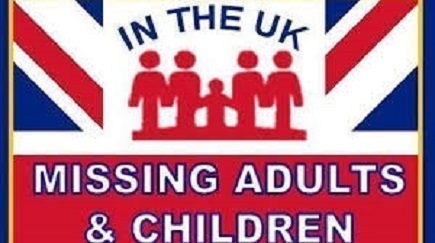Missing
Laurie Lynn Partridge





Laurie, approximately 1974; Age when reported missing: 53 (approximately 2010)
Date and time person was reported missing : 12/04/1974
Missing location (approx) :
Spokane, Washington
Missing classification : Non-Family Abduction
Gender : Female
Ethnicity :
White
DOB : 05/13/1957 (64)
Age at the time of disappearance: 17 years old
Height / Weight : 5'0, 110 pounds
Description, clothing, jewerly and more : A long hooded navy blue coat similar to a monk's robe, a tan sweater, tan plaid pants and blue denim shoes with crepe soles. Carrying a brown leather purse with a blue flower design and a braided shoulder strap.
Distinguishing characteristics, birthmarks, tattoos
: Caucasian female. Blonde hair, blue eyes. Laurie has a brown mole on her right cheek.
Information on the case from local sources, may or may not be correct : Laurie left her classes at Ferris High School in Spokane, Washington at 12:30 p.m. on December 4, 1974, because she felt was suffering from menstrual cramps. She was unable to find a ride and decided to walk the two miles to her home in the 5400 block of south Custer Street.
She was last seen walking south on Havana Street near 37th Avenue. There were reports that a green Pinto station wagon was in the area at the time, possibly following her.
Laurie never arrived home and has never been heard from again. Her parents reported her missing when she failed to report for work at the Lincoln Heights Theater.
Laurie's father had bought her tickets to a Beach Boys concert which took place after disappearance, and the police went to the concert to see if she would arrive there. They did not see her.
It was later determined that Laurie's tickets were in fact used, but authorities were unable to find out who used them. The contents of her purse were located in the area where she was last seen on December 6, 1974, two days following her disappearance.
Authorities initially believed Laurie left of her own accord, but her family never believed this, and police have since revised their opinion; they now think she was taken against her will. She and her 20-year-old boyfriend were hoping to marry and were planning to select an engAge at the time of disappearance: ment ring on the day of her disappearance.
She worked for her high school newspaper and was on the school drill team. Laurie is the oldest of five siblings. She had moved to Spokane from California just a few months before her disappearance, and had said she would like to return.
In 2011, investigators announced they had a new witness who may have seen Partridge during her walk home. Authorities haven't disclosed the witness's identity, but stated the person allegedly saw Laurie at 4:15 p.m., several hours after the last confirmed sighting of her. A Caucasian male in his forties or fifties, as well as a white truck with a dark-colored door and a van back end, were nearby.
Three suspects have been questioned in Laurie's case over the years, but no one has been charged in her case. Her boyfriend was questioned extensively but never named as a suspect. Her parents got a divorce after her disappearance, but later reconciled and remarried each other more than ten years later.
Laurie's mother died in 2004, but her father is still alive. Her case remains unsolved.
Other information and links : ncy
Spokane County Sheriff's Office
509-477-4760
September 2021 updates and sources
Missing Children�s Statistics
One Missing Child Is One Too Many
The lack of a common definition of �missing child,� and a common response to the issue, results in few reliable statistics on the scope of the problem around the world.
Even with this challenge, we know that:
In Australia, an estimated 20,000 children are reported missing every year.
Australian Federal Police, National Coordination Centre.
In Canada, an estimated 45,288 children are reported missing each year.
Government of Canada, Canada�s Missing � 2015 Fast Fact Sheet.
In Germany, an estimated 100,000 children are reported missing each year.
Initiative Vermisste Kinder.
In India, an estimated 96,000 children go missing each year.
Bachpan Bachao Andolan, Missing Children of India.
In Jamaica, an estimated 1,984 children were reporting missing in 2015.
Jamaica�s Office of Children�s Registry
In Russia, an estimated 45,000 children were reported missing in 2015.
Interview with Pavel Astakhov MIA �Russia Today�, Apr. 4, 2016.
In Spain, an estimated 20,000 children are reported missing every year.
Spain Joins EU Hotline for Missing Children, Sep. 22, 2010.
In the United Kingdom, an estimated 112,853 children are reported missing every year.
National Crime Agency, UK Missing Persons Bureau.
In the United States, an estimated 460,000 children are reported missing every year.
Federal Bureau of Investigation, Missing Children�s Statistics
One Missing Child Is One Too Many
The lack of a common definition of �missing child,� and a common response to the issue, results in few reliable statistics on the scope of the problem around the world.
Even with this challenge, we know that:
In Australia, an estimated 20,000 children are reported missing every year.
Australian Federal Police, National Coordination Centre.
In Canada, an estimated 45,288 children are reported missing each year.
Government of Canada, Canada�s Missing � 2015 Fast Fact Sheet.
In Germany, an estimated 100,000 children are reported missing each year.
Initiative Vermisste Kinder.
In India, an estimated 96,000 children go missing each year.
Bachpan Bachao Andolan, Missing Children of India.
In Jamaica, an estimated 1,984 children were reporting missing in 2015.
Jamaica�s Office of Children�s Registry
In Russia, an estimated 45,000 children were reported missing in 2015.
Interview with Pavel Astakhov MIA �Russia Today�, Apr. 4, 2016.
In Spain, an estimated 20,000 children are reported missing every year.
Spain Joins EU Hotline for Missing Children, Sep. 22, 2010.
In the United Kingdom, an estimated 112,853 children are reported missing every year.
National Crime Agency, UK Missing Persons Bureau.
In the United States, an estimated 460,000 children are reported missing every year.
Federal Bureau of Investigation, NCIC.
This, however, is only a snapshot of the problem. In many countries, statistics on missing children are not even available; and, unfortunately, even available statistics may be inaccurate due to: under-reporting/under-recognition; inflation; incorrect database entry of case information; and deletion of records once a case is closed.
The lack of numbers, and the discrepancy in the numbers that do exist, is one of the key reasons why ICMEC developed and advocates for the Model Missing Child Framework, which assists countries with building strong, well-rounded national responses, and facilitates more efficient investigations, management, and resolution of missing children cases.
We firmly believe that one missing child is one too many, and we are committed to improving the global understanding of and response to missing and abducted children.
Here is a look at missing children in the United States. There are several different types of missing children: runaways, family abductions, lost or �thrown away� and non-family abductions. Advances in technology, communications through public alerts and greater cooperation from law enforcement have facilitated the recovery process.
Statistics
According to the FBI�s National Crime Information Center (NCIC) Missing Person File, there are 89,637 active missing person records, of which juveniles under the age of 18 account for 30,396 (34%) of the records. (as of December 31, 2020)
AMBER Alert
�AMBER (America�s Missing: Broadcast Emergency Response) Alerts are emergency messages broadcast when a law enforcement agency determines that a child has been abducted and is in imminent danger. The broadcasts include information about the child and the abductor, including physical descriptions as well as information about the abductor�s vehicle - which could lead to the child�s recovery.�
The AMBER Alert system began in 1996 and was named in honor of Amber Hagerman, a 9-year-old who was abducted in Arlington, Texas, and murdered.
All 50 states, the District of Columbia, Puerto Rico, and the US Virgin Islands have AMBER Alert plans in place to help find missing children in danger.
As of December 2020, the AMBER Alert program has been credited with the safe recovery of 1029 children..
This, however, is only a snapshot of the problem. In many countries, statistics on missing children are not even available; and, unfortunately, even available statistics may be inaccurate due to: under-reporting/under-recognition; inflation; incorrect database entry of case information; and deletion of records once a case is closed.
The lack of numbers, and the discrepancy in the numbers that do exist, is one of the key reasons why ICMEC developed and advocates for the Model Missing Child Framework, which assists countries with building strong, well-rounded national responses, and facilitates more efficient investigations, management, and resolution of missing children cases.
We firmly believe that one missing child is one too many, and we are committed to improving the global understanding of and response to missing and abducted children.
Here is a look at missing children in the United States. There are several different types of missing children: runaways, family abductions, lost or �thrown away� and non-family abductions. Advances in technology, communications through public alerts and greater cooperation from law enforcement have facilitated the recovery process.
Statistics
According to the FBI�s National Crime Information Center (Missing Children�s Statistics
One Missing Child Is One Too Many
The lack of a common definition of �missing child,� and a common response to the issue, results in few reliable statistics on the scope of the problem around the world.
Even with this challenge, we know that:
In Australia, an estimated 20,000 children are reported missing every year.
Australian Federal Police, National Coordination Centre.
In Canada, an estimated 45,288 children are reported missing each year.
Government of Canada, Canada�s Missing � 2015 Fast Fact Sheet.
In Germany, an estimated 100,000 children are reported missing each year.
Initiative Vermisste Kinder.
In India, an estimated 96,000 children go missing each year.
Bachpan Bachao Andolan, Missing Children of India.
In Jamaica, an estimated 1,984 children were reporting missing in 2015.
Jamaica�s Office of Children�s Registry
In Russia, an estimated 45,000 children were reported missing in 2015.
Interview with Pavel Astakhov MIA �Russia Today�, Apr. 4, 2016.
In Spain, an estimated 20,000 children are reported missing every year.
Spain Joins EU Hotline for Missing Children, Sep. 22, 2010.
In the United Kingdom, an estimated 112,853 children are reported missing every year.
National Crime Agency, UK Missing Persons Bureau.
In the United States, an estimated 460,000 children are reported missing every year.
Federal Bureau of Investigation, NCIC.
This, however, is only a snapshot of the problem. In many countries, statistics on missing children are not even available; and, unfortunately, even available statistics may be inaccurate due to: under-reporting/under-recognition; inflation; incorrect database entry of case information; and deletion of records once a case is closed.
The lack of numbers, and the discrepancy in the numbers that do exist, is one of the key reasons why ICMEC developed and advocates for the Model Missing Child Framework, which assists countries with building strong, well-rounded national responses, and facilitates more efficient investigations, management, and resolution of missing children cases.
We firmly believe that one missing child is one too many, and we are committed to improving the global understanding of and response to missing and abducted children.
Here is a look at missing children in the United States. There are several different types of missing children: runaways, family abductions, lost or �thrown away� and non-family abductions. Advances in technology, communications through public alerts and greater cooperation from law enforcement have facilitated the recovery process.
Statistics
According to the FBI�s National Crime Information Center (NCIC) Missing Person File, there are 89,637 active missing person records, of which juveniles under the age of 18 account for 30,396 (34%) of the records. (as of December 31, 2020)
AMBER Alert
�AMBER (America�s Missing: Broadcast Emergency Response) Alerts are emergency messages broadcast when a law enforcement agency determines that a child has been abducted and is in imminent danger. The broadcasts include information about the child and the abductor, including physical descriptions as well as information about the abductor�s vehicle - which could lead to the child�s recovery.�
The AMBER Alert system began in 1996 and was named in honor of Amber Hagerman, a 9-year-old who was abducted in Arlington, Texas, and murdered.
All 50 states, the District of Columbia, Puerto Rico, and the US Virgin Islands have AMBER Alert plans in place to help find missing children in danger.
As of December 2020, the AMBER Alert program has been credited with the safe recovery of 1029 children.) Missing Person File, there are 89,637 active missing person records, of which juveniles under the age of 18 account for 30,396 (34%) of the records. (as of December 31, 2020)
AMBER Alert
�AMBER (America�s Missing: Broadcast Emergency Response) Alerts are emergency messages broadcast when a law enforcement agency determines that a child has been abducted and is in imminent danger. The broadcasts include information about the child and the abductor, including physical descriptions as well as information about the abductor�s vehicle - which could lead to the child�s recovery.�
The AMBER Alert system began in 1996 and was named in honor of Amber Hagerman, a 9-year-old who was abducted in Arlington, Texas, and murdered.
All 50 states, the District of Columbia, Puerto Rico, and the US Virgin Islands have AMBER Alert plans in place to help find missing children in danger.
As of December 2020, the AMBER Alert program has been credited with the safe recovery of 1029 children.
KXLY News 4
The Idaho Spokesman-Review
Interactive Missing Person Search Map





























